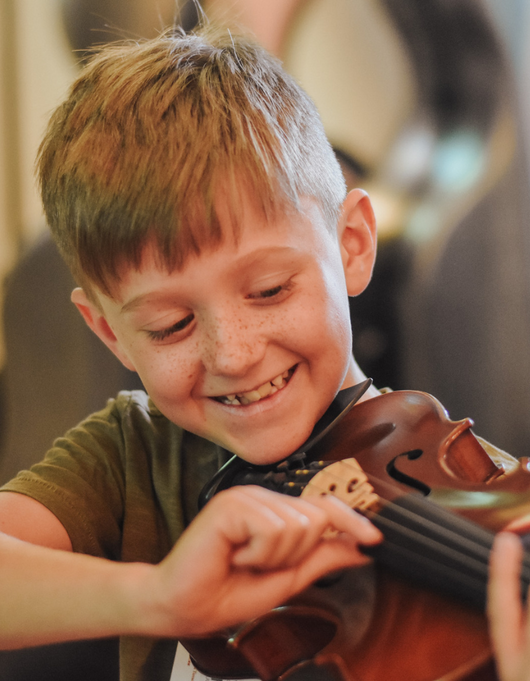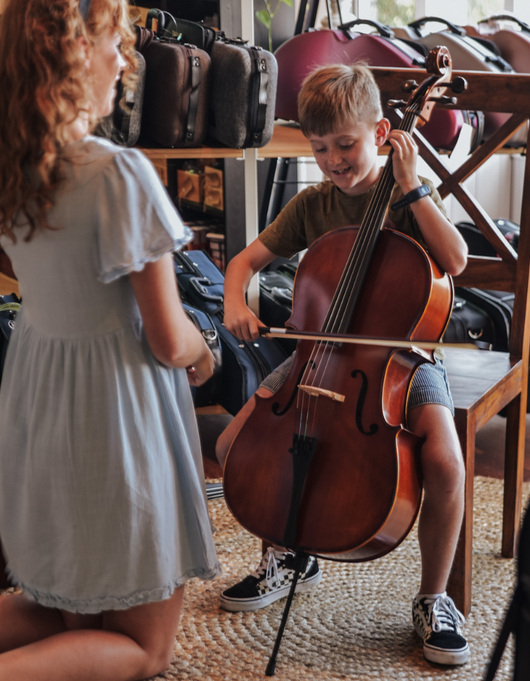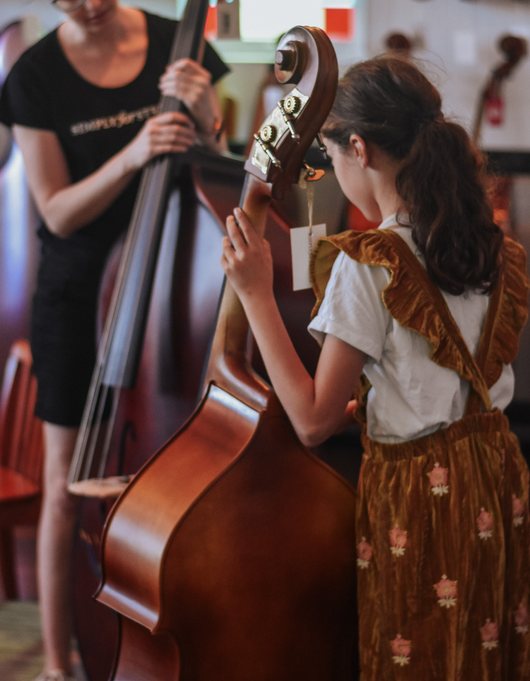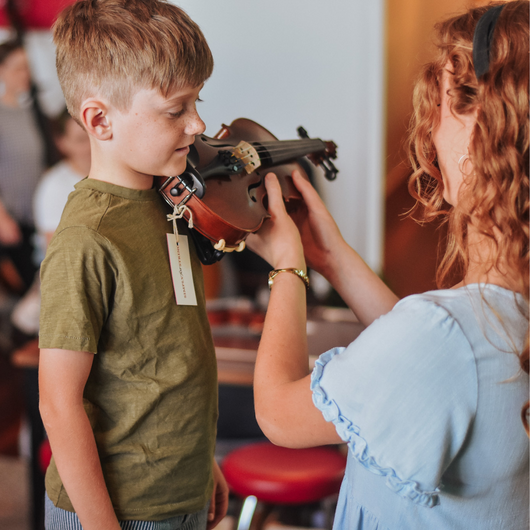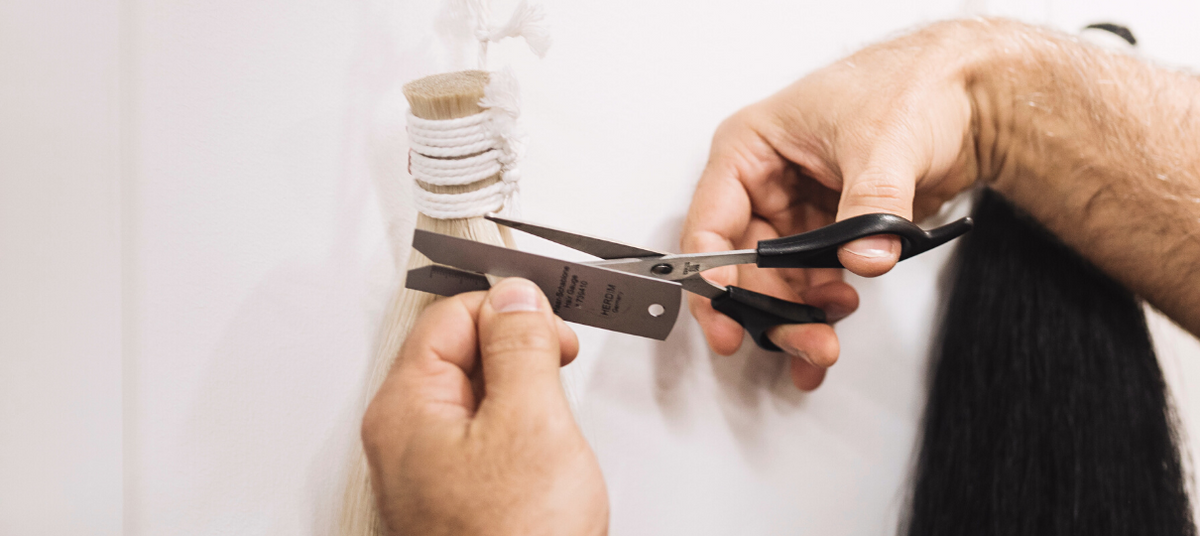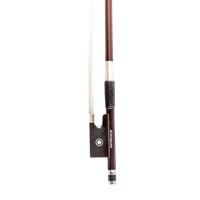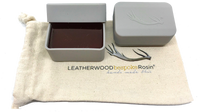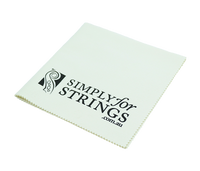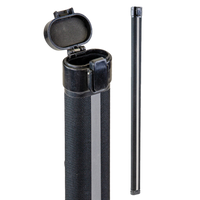The violin wouldn’t be much without a bow, and yet until last century, it was considered almost an accessory along with the case and the tuning fork. Having said that, there have always been bows of exceptional craftsmanship and beauty admired by those with eyes to see. Learn more about how bows are crafted below!
What is a violin, viola, cello or double bass bow made from?
Traditionally, violin, viola, cello and double bass bows were crafted with pernambuco, the preferred timber of archetiers (bow makers). It is becoming increasingly scarce due to international treaty restricting export from Brazil because it is listed as an endangered species.
Archetiers are constantly experimenting with different materials. Brazilwood has become a popular alternative for student and intermediate level bows.
Both brazilwood and pernambuco are taken from the same species of tree: “Pau Brasil”, AKA “Caesalphina Echinata”. The loggers only refer to the timber as brazilwood, but bow makers divide the timber between the not-so-dense core or “heart wood” (pernambuco) which is prized more highly, and the more dense outer layer of “sap wood” (brazilwood). Both parts of the tree are excellent for bow making, but the outer is not considered as valuable. However, there is plenty of very good quality brazilwood used in bows.
Snakewood (also called amourette): True snakewood is regarded as the world’s rarest commercially available species of wood, although not listed as endangered at this point. Like the pau brasil tree, it is from South America. Snakewood has always been a favourite for baroque bows, partly because it is fairly similar to pernambuco in performance, but a little less athletic due to a slightly lower elasticity. This would suit the baroque style of playing.
Ipe wood is a very dense, resilient wood that is very popular for architectural use because its fire rating is similar to concrete and steel, and it has amazing longevity in outdoor projects. Bow makers use it for its hardness and flexibility, and it looks very nice: it’s often referred to as Brazilian walnut. although very dense, it’s also fairly lightweight compared to other similar woods, making it a great choice for bows.
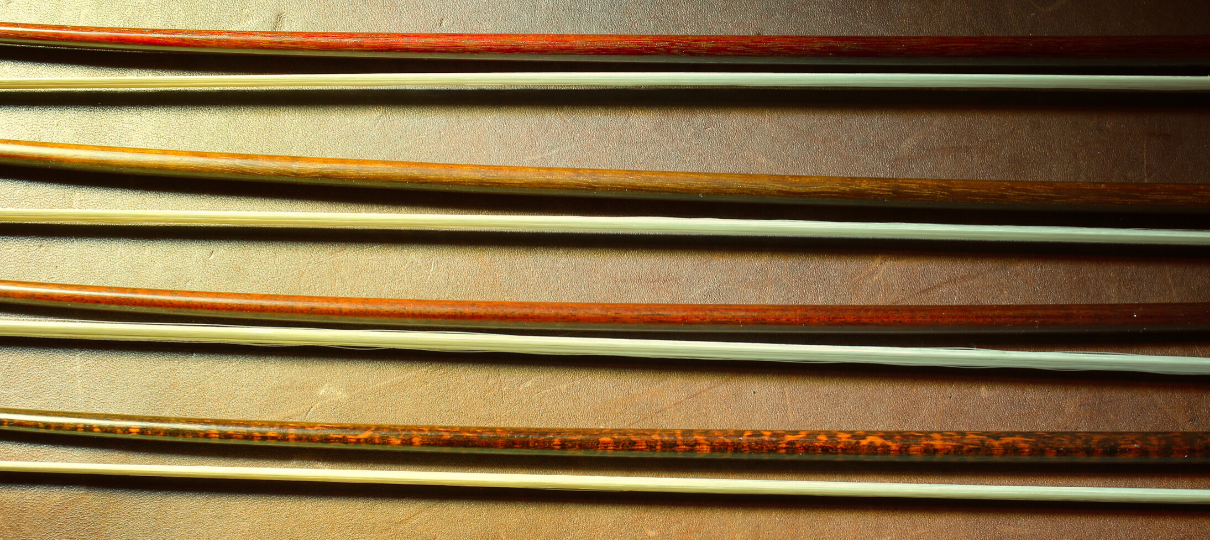
Image: Pernambuco, Brazilwood, Ipe and Snakewood bows.
Carbon fibre bows are becoming quite popular. Carbon fibre (also called graphite fibre or carbon graphite) is commonly made from polyacrylonitrile. It is extremely strong, lightweight and appropriately flexible for bow making. It is often used to replace steel in aircraft, sporting equipment, motor vehicles and much more. Most bows made with carbon fibre have a moulded carbon fibre tube, but many also have braided carbon fibre inside, or other components such as kevlar. They perform wonderfully well and can often be a great choice, especially for travellers because they stand up to a variety of conditions.
In our experience, many teachers and students still prefer traditional timber bows because of the tone control they receive from these. However, carbon fibre bows are growing market and will continue to feature even more into the future.
Coda Bow, our best-selling carbon fibre bow brand use carbon fibre to construct all of their bows. They put the history of carbon fibre best!
“In 1958, Dr. Roger Bacon carried samples of his newly invented material into the Naval Ordnance Lab. He wanted official ASTM specifications for his carbon fiber, or ‘graphite whiskers’, and Stan Prosen was the man to do it – he had developed the standards after all. Stan fashioned the carbon fiber into a standard-sized test ring. What his tests revealed, though, was anything but standard; this was a revolutionary new material. In his notebook, Stan scribed the prescient if understated memo: “strength and modulus of carbon-based fiber indicates that such fibers will soon outperform glass and other fibers in composite structures.” And then—perhaps in his excitement—he dropped the ring. It hit the floor, bouncing back almost to its original height. It was not just the remarkable efficiency of that bounce that caught his attention, however, but the sound of the ring produced against the tile floor – a tone remarkably clear and sustained, unlike anything he had ever heard before. Within twenty years, high-performance carbon fiber was revolutionizing industries as diverse as medical technology, aviation, architecture, and recreation, making it one of the most significant material advances of the twentieth century. But Stan, who came from a musical family, was still thinking of the sound of that ring drop in his laboratory and how to harness its acoustic properties to make beautiful music.”
Learn more about the history and heritage of Coda Bows.
How are bows made?
This is a very involved process that we’ve simplified below.
Almost all wooden bows are made in the same way, even the most affordable ones. The differences are in the quality of woods and other materials used in construction; speed of manufacture; attention to detail. Attempts to mechanise the process have been thwarted by the need to taper the bow correctly towards the point, which factory machinery cannot manage effectively. It must be done by hand. Also the assembly of a frog is much too intricate and requires making by hand.
The Stick:
The stick is made from a “blank” which is a piece of wood that was first cut to the required size.
The long part of the stick is hand shaped using carving tools, including specially made planes, tapering towards the curved end, which is called the bow head, and finally tapering again down to the tip. During the rough preparation stage the stick is made hexagonal. The bow head is also hand carved, using woodcarvers’ knives, rasps and special files.
A flame heats the stick so it can be bent into approximately the correct curve. After fitting the frog (following its initial rough cut) the bow is given a final shaping, including very careful attention to the graduation of the taper. If the finished bow is intended to have a round stick, the rounding will be done at this stage. The stick is usually left hexagonal at the end where the nut, or frog is fitted.
After the final trimming and shaping, the stick is chemically treated using nitric acid, followed by exposure to ammonia fumes, so as to bring out the characteristic colour of the pernambuco or brazilwood. Pernambuco is a dark and oily wood that doesn’t need varnishing. After treating the stick it is then French polished with an oily rag, using shellac and perhaps some other gums and resins to protect the wood and add extra shine.
The tip facing or headplate is made in two parts, using a thin veneer of ebony and outer surface of bone (or plastic in cheaper bows). These are glued together onto the tip of the bow. Traditionally ivory was used for the tip facing, but of course that is now restricted internationally. Mammoth bone is a common substitute, and other materials like silver, gold, shell, and various synthetic materials are also used.
This plate is fitted to create strength for the wood at the tip and around the mortise in which the hair is secured. If damaged or cracked at any time, it is essential to have it replaced: otherwise your bow tip is at risk of further injury.
The process of fitting the tip facing is very detailed, requiring exquisite care with knives and other fine tools. If at any time you do need it replaced, removal of an existing headplate is equally detailed. Other work required in making the stick include cutting the mortise that holds the frog; drilling the hole to house the screw; hand-fitting the silver winding and leather pad.
The Frog:
The frog is a very specialised item that requires your bow maker to be a metal worker, wood carver, and silversmith all in one. The frog is usually made of ebony although other materials are also used.
Prior to carving the frog, the luthier prepares all the metal components. The ferrule is made with two pieces of sheet silver, one flat and the other semicircular, which the maker will solder together. The screw is made with a threaded shaft; the adjuster (handle) is created by the luthier from ebony and silver, turned on a lathe, and given its hexagonal shape by careful filing.
Other items to be made are the silver liner; the back plate for the frog; the eyes - either cut out from mother of pearl and fitted by themselves, or fitted with silver rings as well; the pearl slide.
The frog is cut from a small wedge of ebony and shaped by hand using a plane, chisels, knife, gouge, drill and very fine metal scrapers. As each item is fitted to the frog, and the frog fitted to the stick, there are many adjustments to be made using these various tools.
When the stick and frog are ready to assemble, the hair is fitted to perfection and the final trimming and polishing of the stick and frog are completed.
The Horse Hair:
The correct amount of hair is carefully selected, tied at one end with strong, thin thread. The end is dipped in resin dust and then held to a flame to make it expand, and it’s then pressed into the mortise in the bow head, and secured into place with a small wooden wedge (usually maple).
The hair is then measured, cut to the correct length to fit at the frog. At this point many luthiers will wet the hair. The hair is then brushed and rearranged to sit correctly, the ferrule is slid over the hair, and then this end is also tied and fitted the same way to the mortise in the frog as at the tip, held in place with a maple wedge.
Then the slide is inserted over the hair, the ferrule is brought partly into place and a third maple wedge is fitted in between the tongue of the frog and the ribbon of hair, holding it neatly against the flat part of the ferrule. This is called the spreader wedge. Some luthiers will fit the hair in reverse, at the frog first and then the tip.
All three wedges are freshly cut or at least trimmed specifically to fit your bow during preparation at the time of installation. They will expand and contract with weather, just like the body of your instrument, and will deteriorate over time. With frequent use, this is partly why you need to rehair your bow often.
Care considerations:
An important thing to always remember is that bow hair stretches or tightens based on the weather. Bows made from more affordable wood (ie student level) can be more readily affected by changes in the weather, and when a dry change comes we see plenty of people with bows that have snapped in their cases overnight because they were left partly wound up. Remember to always loosen your bow when you’ve finished playing!
Just like your hair that will sometimes become fluffy when there is static in the air or extra humidity, sometimes your bow hair can look fluffy and not tighten very well. This is simply a response to the weather and should correct itself in a few days.
Hair can stretch over time, but it can also deteriorate in terms of quality. Most luthiers recommend rehairing your bow annually unless you are playing full-time, in which case you’ll already know that you need to rehair more frequently. Again, if it’s a basic student bow you may want to get as much use out of it as possible and then simply replace it. A good rehair can cost substantially more than the bow itself. If your bow is intermediate or above, you will need to rehair when you notice it’s no longer performing at its best.
Additionally, the curve your bowmaker carefully put into your bow is deliberate, to create the tension you need in order to play successfully with all the different techniques required in your music. If you leave it wound up permanently, you will lose that curve and the bow will not function properly. If the bow is basic, you will need to replace it. If the bow is higher quality, a skilled bowmaker will be able to restore the curve.
Wedges can become loose and hairs can fall out of one end as a consequence. Ideally these wedges should be replaced by your rehairer each time your bow is rehaired.
Always guard your bow carefully against bumps and drops. When carrying it, be careful not to bump the tip. If your bow is dropped on its tip, there is a strong chance of featuring the bowhead along the grain. If you notice a crack in the tip facing (headplate), please book the bow in for a replacement plate as soon as possible to avoid any structural damage to the bowhead. Sometimes this will hold on for some time and break in the future, leaving you wondering why it has suddenly snapped. Often this fall can make it break off immediately. For less expensive bows this is terminal due to the highly specialised nature of such a repair. If your bow is valuable, we recommend this type of repair should be referred to a qualified bow maker.

What’s the differences between all the bows?
Violin bows are longest, then viola, then cello . Bass bows vary more with some being shorter, others longer than a cello bow. Again, these lengths are only averages - it will depend on the archetier’s individual design. Generally speaking, the measurement from the tip to the end of the screw are as follows: Violin 745mm, Viola 740mm and Cello 715mm.
Frog shape will vary, but the most common standards help distinguish between violin and viola bows. Violin bows have a smaller frog, usually much more rectangular and with a pronounced corner.
Viola bows have a slightly chunkier frog and usually the corner is rounded and looks like a small cello frog.
Cello frogs are larger again, and have a rounded corner.
Double bass French style frogs look like a very large version of the cello one. Double bass German style frogs are much taller with a curve on the inside to accommodate the middle three fingers.
Image: Double Bass bows compared: a German first and a French second.

Bow weights also vary between the instruments. Violin bows usually weigh between 57g to 63g (average 60g), viola bows between 67g to 73g (average 70g), cello bows between 77g to 84g (av 80g).
As for double bass, two good comparisons are as follows:
Schumann:
- German - 74cm, 137g
- French - 70cm, 129g
Coda Infinity
- German - 75cm, 137g
- French - 70cm, 140g
If you’ve had some questions about bows that you’ve always wanted answered, we hope this blog post was informative and helpful.
As always, the Simply for Strings doors are always open for those curious about music. If you have any questions, big or small, visit our friendly team of staff in-store or pop into our email at hello [at] simplyforstrings.com.au. We’d love to meet you.


